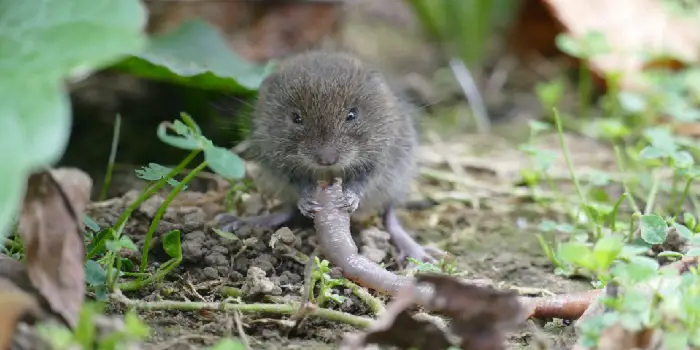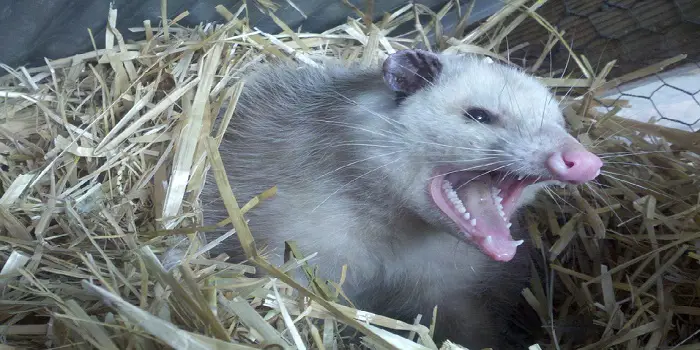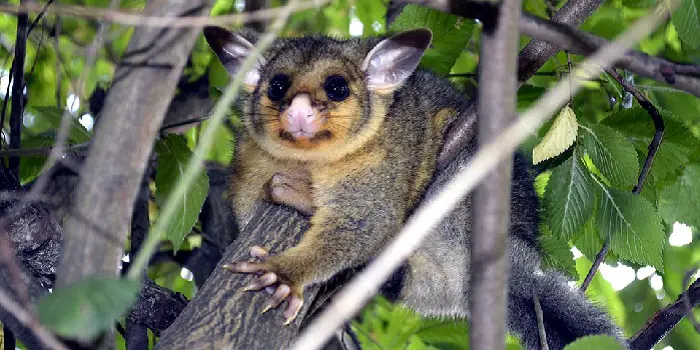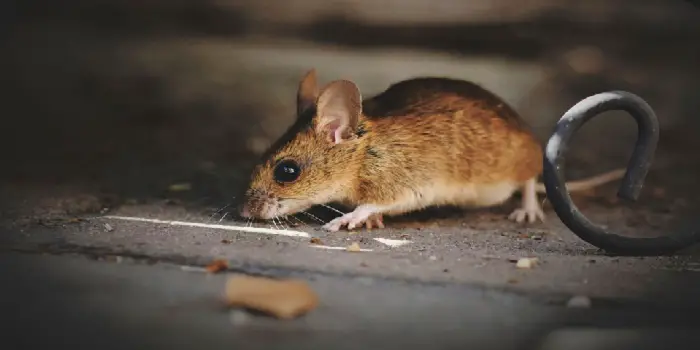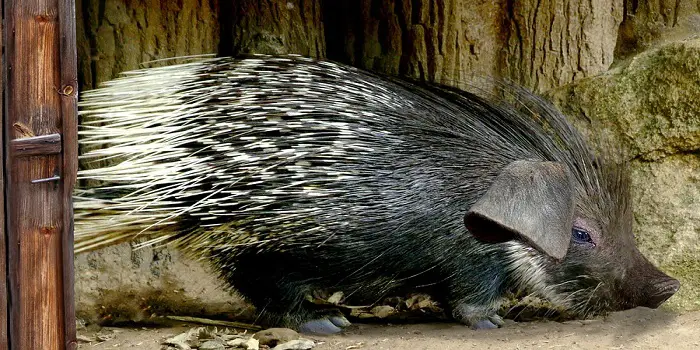
Porcupine is a mammal that belongs to the family of rodents.
It appears to be different from others (in his family) due to its unique features and spines that cover all of his body.
As porcupines are relatively big, steady, and comparatively docile animals, if provoked, they may get extremely aggressive and may fight with their sharp quills.
Since they like salt and usually feed on barks, they can easily bring your vegetation, garden trees, and yard furniture under threat.
A simple approach to removing porcupines from your premises is to catch them with a live trap and release them at a distant location.
Live trapping is in fact a securest and most efficient way to keep these animals at bay without causing them any harm.
Below is a guideline with tips and a few product recommendations which will hopefully help you lure and capture a porcupine away.
The very first step starts with identifying the animal correctly…
Identify the Porcupine
Before use start with trapping, make sure you know that you are dealing with a porcupine and nothing else.
This is important as it will help you use the right bait and techniques specifically meant for capturing the porcupine.
As an identification check for their quills.
Porcupines feature sharp quills all over their body to safeguard themselves from predators. These quills are several inches in length.
A porcupine is an animal that weighs about 30 pounds and measures about 25 to 36 inches in length, with a tail of 8 to 10 inches.
Usually, they are grey, white, or brown and weigh around 12 to 35 pounds.
They are leisurely moving nocturnal beings and can climb trees fast.
Their major food includes the bark of trees along with nuts, fruits, twigs, leaves, and berries.
They don’t attack but may get dangerous when threatened because of their sharp quills.
Hence, when dealing with one, make sure you are fully cautious.
Where to Inspect and What to Look For?
Once you know that you are dealing with a porcupine, it is important to know the areas where they are most active.
There are a number of signs which reveal their activity, like gnawed trunks of trees, ripped gardens, and tracks laid by them.
Typically, you should look for areas with high action from porcupines.
- If your garden has trees, it will be the favorite place for porcupines. You will mostly find them in trees, chewing wood.
- Porcupines have a high sense of smell and may get attracted to salty food. Therefore, you may also find them around places with vegetation or pet food.
Remember, as they are nocturnal beings, they cause all the damage at night.
You should therefore, also look at the tree base for their droppings in the morning, which are in the form of small pellets.
Once you know about all these possible areas, you can put your live traps for porcupines there.
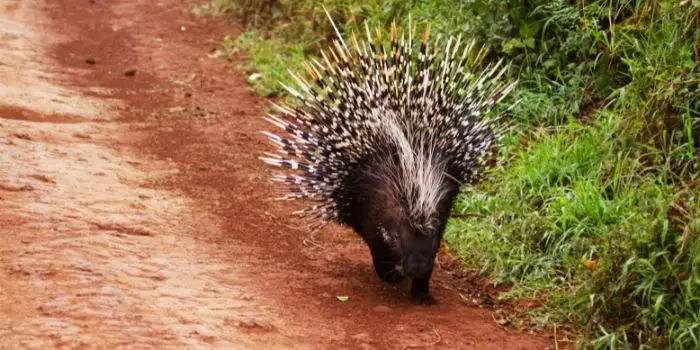
How to Capture a Porcupine in a Live Trap?
Porcupines are mostly calm and peaceful rodents.
But at times, they can be a real menace, especially when they happen to invade your back yards and the lawns.
They can be seen running or digging around your garden, which is not at all welcoming for any homeowner.
To avoid porcupines from digging deep down the ground and damaging all your favorite trees, flowers, and fruits, it’s good to make and place the trap as soon as you see one.
To entice and capture the porcupine in a live animal trap, you can follow these steps…
Step 1: Get ready
Once you have discovered your pest and noted the areas of their activity, you should get ready with your live trap.
You can catch the porcupines with a homemade wooden box trap or can use a cage trap that comes with large commercial wire traps.
Make sure it’s big enough to capture the porcupine, usually with a minimum dimension of 10 x 12 x 32 inches.
Before you begin with the trapping process, it’s also important that you wear gloves while laying the trap to avoid leaving any human scent.
If a porcupine senses a human scent near the trap location, it will not visit the area, and your trap will become ineffective.
Step 2: Position the trap
After you have noticed all the places with high porcupine activity, pick the ones where you want to put the trap first.
Choose the area where the porcupine is most possibly be found at night.
When positioning the animal trap make sure the trap is placed on an even surface so that it works 100%.
Installing a wooden board on top of the trap is recommended as it will prevent excess heat and rain exposure for the porcupine, which can make them stressed in the confined cage trap.
Step 3: Place the right bait
A porcupine will enter the live trap only because of the bait.
In other words, the right bait that can attract porcupines will enhance your chances of catching them.
Being herbivores, porcupines like to feed on salt and cut fruit.
So, pieces of cut apple with salt on them will serve as the best lure for them.
If you don’t have an apple or other fruits available, you can also try some of these baiting options to lure the porcupine:
- Salt mixed with cooking oil
- Saltwater-soaked cloth, sponge, wood, or leather
- Fresh bark, leaves, veggie scraps such as pumpkin, carrot, or turnip
Make sure that you put the bait at the end of the trap so that the porcupine is completely inside it while reaching the food.
Step 4: Prepare the trap.
Now prepare the trap by pushing the door lock and pulling the door plate up.
Pull the trigger arm forward to lift the door plate. You will know as soon as the trigger arm gets hooked to the door.
Chances are that these pests may knock over the trap to reach the food inside.
So, to prevent this problem, you can put some weight on the trap.
Step 5: Monitor it regularly.
Now when you have prepared the trap for the porcupine, you should check the trap at least two times a day, usually in the morning and then in the evening.
There may be chances that the porcupine is smart enough to get caught in the first attempt.
So, if needed, refill the bait with their favorite food items again.
Remember that you do not check the trap too frequently, or it may discourage them from coming to the trap.
Step 6: Check local authorities
If any other animal gets captured in the trap that you don’t want to get rid of, you should release them.
But, if it’s a porcupine captured in a live trap, don’t keep the animal trapped for more than 24 hours.
As soon as you have trapped the porcupine, check with your local authorities to find out the ways how you can suitably relocate the pest.
Step 7: Relocate the animal
After getting approval from your local authorities, it’s time to relocate the porcupine away from your property.
- Pick the trap calmly without making any noise.
- Put a towel or paper over it to avoid scaring the animal
- Also, keep yourself protected from any injury from a porcupine by wearing padded clothing and gloves
After reaching a distant location, cautiously open the trap and release the animal into the wild.
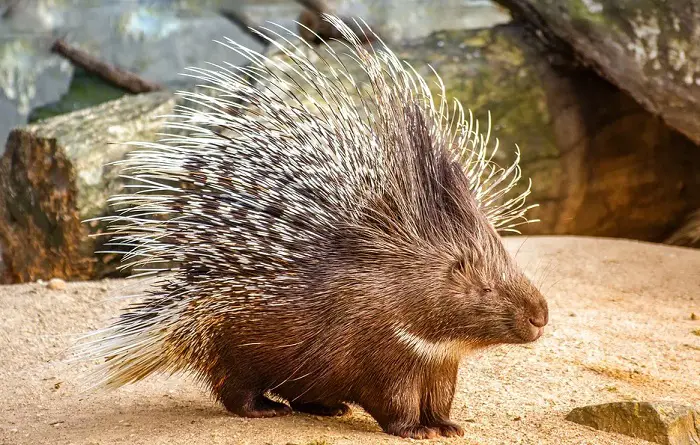
How Dangerous are Porcupines?
Porcupine is a silent rodent that has strong teeth and incredible claws. They are rarely seen to be aggressive.
But the quills (provided by nature) on the body of the porcupine act like a defensive tool to scare away other animals and humans.
These can be shot out of their body to hit the prey, just like a sharp arrow.
With that said, porcupines cannot shoot these needle-like sharp quills aggressively with force. These quills only get released when touched.
This unique feature of the sharp quills or spines is what makes them dangerous for you and your family (including your pets).
While it’s rare, it can also contract rabies and can cause illness if they bite or scratch your body.
Once they are seen around or enter your property, taking immediate steps to get rid of them is important.
How to Prevent Porcupines from Entering Your Property?
Once you have used the trap for capturing a porcupine successfully, it does not guarantee that these animals will not return to your property again.
Hence, you will need to make sure that these animals don’t trespass on your property again by opting for some preventive measures.
Below are a few tips to keep your premises porcupine-free…
1- Fencing
If your house is in the woods and there is no fencing, you may be prone to attack by porcupines and other animals.
So, make sure you block them off by fencing your property and garden, including all the plantation flower plants, tall trees, etc.
Using chicken fences can be a decent option as these are easily available.
You can use these chicken wires along with an electric wire to make the property even safer.
While installing the fence, place them at a minimum height of 18 inches which will neither allow the porcupine to crawl through it nor jump over it.
2- Remove food sources
As porcupines have a high sense of smell, they can get attracted to trash and food supplies easily.
Hence, you should make sure that all the trash is put in the dustbin and the lid is sealed perfectly.
Get rid of all the debris from your premises and if there are any prospective food supply or water resources like a pet bowl, then make sure it is stored inside.
3. Use repellent products
Using repellent products is another best way to control these spooky invaders from entering your property.
These repellents are easily available in the market and come in the form of chemicals and ultrasonic machines.
- Ultrasonic machines generate a particular frequency of sound and light to repel and scare porcupines away as they are very disturbing for the animals but not humans.
- Chemical sprays (like fox scent sprays) can be sprayed on plants and trees to keep the porcupines on the bay because of their peculiar smell or taste.
Various kinds of home sprays can also be made using pepper or fox urine (available on the market).
You can even use moths and cotton balls soaked in the sprays to make them more effective in deterring the porcupines.
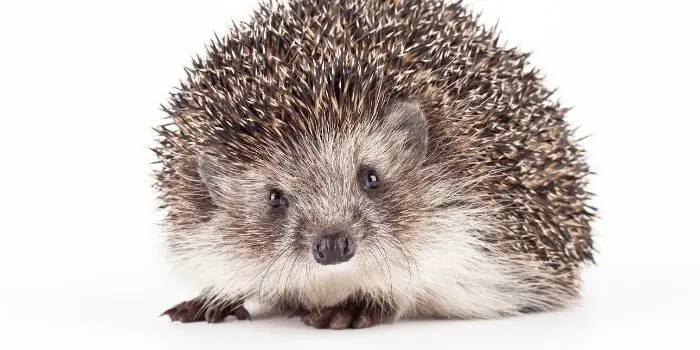
Important Things to Consider When Trapping the Animal
Since porcupines can be dangerous to handle, you should take proper precautions when trapping them in a live trap.
First of all, do not try to physically handle porcupines without any gloves – they have sharp quills that can harm you.
Additionally, you should not get in contact with animal bodily fluids like saliva – they may carry illnesses like rabies or bacteria that can be harmful to you.
When the animal gets captured in the cage trap, it becomes stressed, weak and dehydrated very quickly.
This is generally due to the lack of food, water, and even extreme weather conditions outside that are not favorable for them.
You should therefore try to relocate them as soon as possible.
If possible, try setting up the porcupine traps on days with mild temperatures and favorable weather conditions.
If it’s very hot outside, consider placing a trap in the shaded area. If it’s too cold, place the trap protected from snow and extremely cool winds.
Other Related Questions:
What animals can kill a porcupine?
Fisher (a small carnivorous mammal native to North America) is known to be a primary predator of North American porcupines.
Animals like coyotes, cougars, bobcats, foxes, lynxes, bears, wolves, and even Great Horned Owls have quills embedded like a porcupine.
These animals can kill porcupines by attacking their unprotected face or by flipping over the animal, which exposes its vulnerable underside.
What happens if you touch a porcupine?
Although not poisonous, quills are said to be a highly sophisticated defense mechanism for porcupines.
When touched by an outer body, these get detached and can get penetrated through the body deeply.
If you come closer or try to touch them, these animals can stick you with more than a dozen quills instantly.
If not treated immediately, the quilled area can become painful or infected.
When should you take the help of professionals?
In case you think that the situation is getting out of control and you can’t handle it individually, the professionals to help porcupine control is just a call away.
At times a porcupine or other animal enters the areas like your attic that are congested.
In this situation, trapping and controlling it can be a real challenge. It’s therefore not safe to handle the animal yourself.
The professionals can be of great help as they use all the best pest control solutions to trap the animal and shield your home from getting any future damage.
The Conclusion
Porcupines are silent invaders whose presence should not be ignored.
They can be a real problem when they start invading your yard and the trees in your garden.
Although discouraging the porcupine from entering your premises is a great way to get rid of them, you should keep yourself ready to capture them if they enter your property.
Share the post "How to Lure and Capture a Porcupine – In a Live Trap?"

Welcome to ProShieldPest.com. I am Tina Jones. I have been working as a pest removal professional in Winslow, Arizona lately. At present, I love to spend my time with my family as a retiree.
Here I share all my knowledge and experiences to help people understand better how they can stop pests at their homes without actually killing them. Hopefully, the information you will find here will help in safeguarding your home! You can check more about me here.

